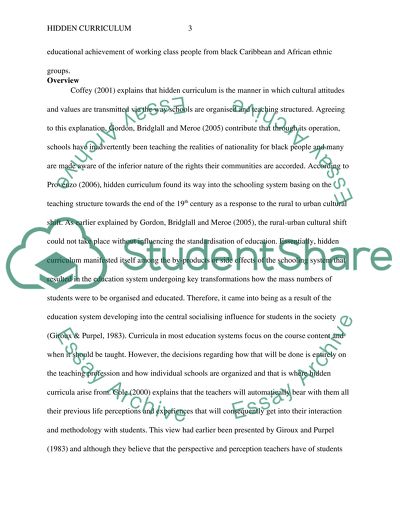Cite this document
(“How does the hidden curriculum during schooling(mainly secondary Literature review”, n.d.)
How does the hidden curriculum during schooling(mainly secondary Literature review. Retrieved from https://studentshare.org/sociology/1692463-how-does-the-hidden-curriculum-during-schoolingmainly-secondary-schools-affect-the-educational-achievement-of-working-class-young-people-from-black-caribbean-and-african-ethnic-groups-in-the-uk
How does the hidden curriculum during schooling(mainly secondary Literature review. Retrieved from https://studentshare.org/sociology/1692463-how-does-the-hidden-curriculum-during-schoolingmainly-secondary-schools-affect-the-educational-achievement-of-working-class-young-people-from-black-caribbean-and-african-ethnic-groups-in-the-uk
(How Does the Hidden Curriculum During schooling(mainly Secondary Literature Review)
How Does the Hidden Curriculum During schooling(mainly Secondary Literature Review. https://studentshare.org/sociology/1692463-how-does-the-hidden-curriculum-during-schoolingmainly-secondary-schools-affect-the-educational-achievement-of-working-class-young-people-from-black-caribbean-and-african-ethnic-groups-in-the-uk.
How Does the Hidden Curriculum During schooling(mainly Secondary Literature Review. https://studentshare.org/sociology/1692463-how-does-the-hidden-curriculum-during-schoolingmainly-secondary-schools-affect-the-educational-achievement-of-working-class-young-people-from-black-caribbean-and-african-ethnic-groups-in-the-uk.
“How Does the Hidden Curriculum During schooling(mainly Secondary Literature Review”, n.d. https://studentshare.org/sociology/1692463-how-does-the-hidden-curriculum-during-schoolingmainly-secondary-schools-affect-the-educational-achievement-of-working-class-young-people-from-black-caribbean-and-african-ethnic-groups-in-the-uk.


